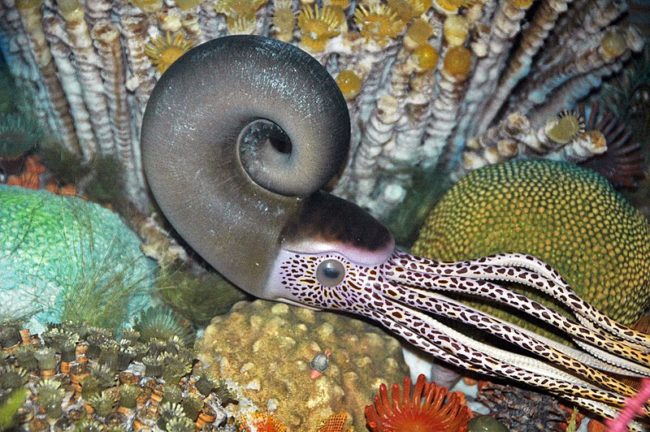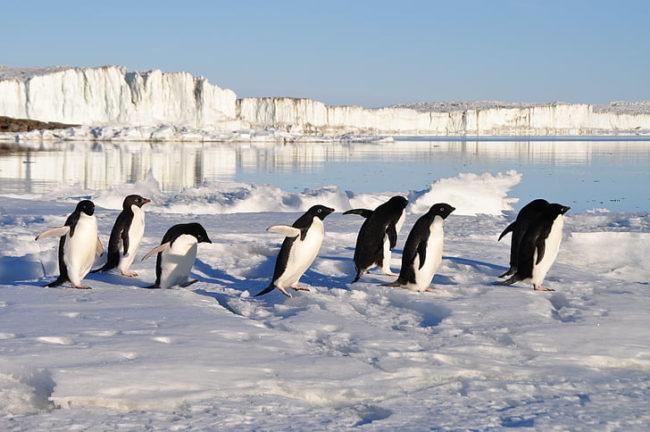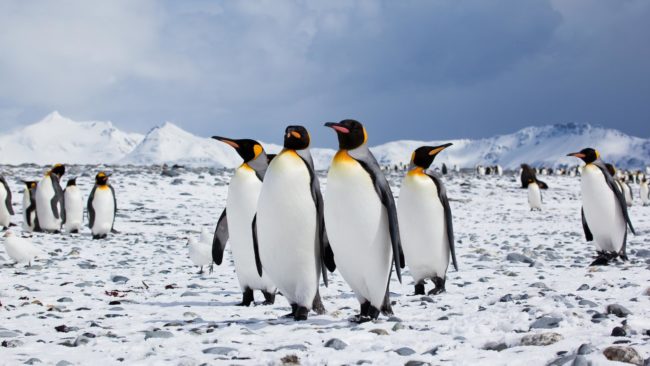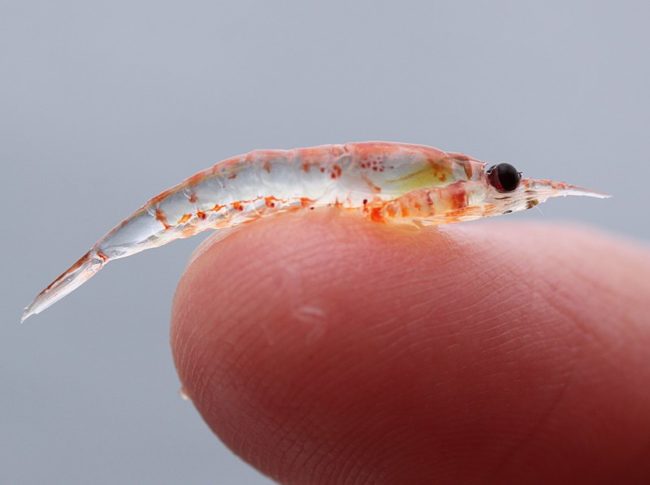Different creatures have different food habits. When we talk about birds, they fall into all three general categories - Carnivores, Omnivores, and Herbivores. Birds play a significant role in balancing out the ecosystem.
Penguins are carnivores’ sea birds. There are 17 different species of penguins.
Penguin species can vary significantly in size and look quite different, but they all share the same primary diet.
What are carnivores’ animals? A carnivore is a creature that feeds meat or animal flesh predominantly. Carnivores are also known as predators. Prey are the organisms that predators hunt. Carnivores play an essential role in the food chain.
Penguins are all carnivores and predators, and they only consume meat. They eat all kinds of tiny seafood like Fish, squids, and krill. They mainly eat small crustaceans found in the ocean.
Young penguins eat a variety of small squids and small fish. They play an essential role in the environment.
Different penguin species have other food preferences that mainly depend on the size of the prey. The various diet preference is due to the habitat and availability of prey. It also helps decrease competition among species.
Today, we are going to dive deep and understand – " what are the different species of animals that penguins eat?" Are you ready? Let’s go!
Krill
Krill are shrimp-like organisms that are only a few millimeters long and grow to reach nearly two inches long. Krill usually travel in large groups.
Krill can be found all over the ocean. They play an essential role in the aquatic food chain, particularly in the Southern Ocean.
Antarctic Krill is a valuable food source for various marine species and aquatic birds, including penguins. All species of penguins like to eat krill.
According to estimates, the Adelie penguin consumes over 1,500,000,000 kg of Krill every year.
Fish
Penguins are the birds of the ocean. Penguins can catch and eat any fish that they find in the sea.
Fish make up 80% of a penguin’s diet. They will catch and eat almost any type of Fish to satisfy their hunger. Yet, they are fond of fish species such as silverfish, lantern fish, sprats, pilchards, mullets, anchovies, sardines, and more.
Fish is a precious food source for penguins because it helps them build up a lot of body fat to survive harsh winters and periods of fasting.
According to experts, the entire breeding population of Adelie penguins eats approximately 115,000 metric tons of fish each year.
Crustaceans
There are more than 67 thousand species of crustaceans found in our oceans. The stiff exoskeleton of these animals distinguishes them, and they may grow to be quite large.
Penguins enjoy eating every type of crustaceans such as crabs, lobsters, crayfish, shrimp, krill, barnacles, and many more. Penguins love eating Krill.
An Adelie penguin colony of five million birds would consume 8 million kilograms (17.6 million pounds) of Fish and Krill per day.
The hard beaks of penguins can shatter the hard shells of these insect-like creatures. However, they catch many of them and eat them at a go.
Cephalopods
What are Cephalopods? Squids, octopuses, cuttlefish, and nautiluses are all members of the molluscan class Cephalopod.

Cephalopods
A big head, bilateral body symmetry, and a pair of limbs or tentacles developed from the original molluscan foot distinguish these exclusively aquatic organisms. A tiny percentage of some penguins’ diet consists of these groups, such as the squid and cuttlefish.
Adult penguin species are capable of deep dives while foraging. They depend on their eyesight or vision for catching these cephalopods.
Penguins locate cephalopods while diving to get food. This method helps them to get their food quickly.
For Instance, an Adelie penguin, the littlest species of the penguin population, can eat 3,500,000 kilograms of squids each year.
Amphipods
Amphipods resemble crustaceans or tiny crustaceans such as shrimp. Unlike most crustaceans, they do not have a hard covering over the thorax. They generally range in sizes from 1 to 340 mm. These tiny creatures inhabit nearly all aquatic habitats.
Amphipods, a dominant fauna on the underside of sea ice, provide food for penguins, Fish, seals, and other birds.
These larvae come in a variety of kinds. Tiny penguin species such as fairy penguins enjoy eating these small Amphipods.
“Huge penguins such as king penguins have devoured bigger Amphipods,” according to one study. Chinstrap penguin intestines contain amphipods.
How do penguins digest all this meat?
While it is uncertain if all penguin species ingest stones purposefully or inadvertently, stone swallowing is natural for some species. The king, rockhopper, and Marconi penguins seem to eat rocks purposely.
Although it might be surprising to hear, penguins have been fond of stones.
Stones have been discovered in the bellies: Emperor, Adelie, African, Gentoo, Megalenic, and yellow-eyed penguins.
Some researchers believe that stone swallowing is a part of the penguin’s daily diet, which helps penguins minimize buoyancy while diving or in an attempt to alleviate hunger.
Penguins have also been eating and swallowing small stones. They do not digest these rocks, but they help them digest their more challenging prey, such as crustaceans, by grinding these foods into smaller pieces so that penguins can easily digest them.
Most of the digestion occurs in the bird’s gizzard, with the aid of stones to help crush the more challenging ingredients.
How much do penguins eat?
How much food a penguin eats depends on its species and the season? During fasting or wintertime, some species can get by with very little food, while others, such as male emperor penguins, do not eat at all during this season so that they can care for their eggs.
In other months, all penguins will consume more food than usual. They take the year to gain weight and store enough fat for the harsh winter months.
Why do penguins fast? Penguins depend on their highly insulated feathers as protection and waterproofing, and they go through severe fasting periods during molting.
It is not uncommon for a penguin to lose 25–55 percent of its body weight while molting because it cannot enter the ocean to feed, and nesting penguins also drop in severe weight between foraging trips and face-ups downs.
Longer excursions are typical before and after the bird has gained significant weight, and the short period can last for many weeks.
For Instance: In the summer, an active and medium-sized penguin can consume around 2 pounds of food per day, but they can consume just one-third of that amount in the winter.
Smaller species will consume more miniature food, but adult emperor penguins require 2 - 5 kg of food per day.

penguins
A medium-sized penguin can eat about 2 pounds of food each day during the summer season, but they can eat only a third of that in the winter season.
Why are penguins’ carnivores?
Penguins are not herbivores or omnivores; they are only carnivores. Penguins cannot eat plants because their digestive system does not work appropriately to digest plants.
Penguins live in marine habitats. Though they can quickly eat any aquatic plant, their digest does not budge to it. Why? Penguins need energy and fat to survive in the harshest climate, and they get it from marine animals, i.e., Fish, squids, and krill, and not from the plants.
How do baby penguins get their food?
Little penguins depend on their parents for food. Male Penguins spend a lot of time protecting their eggs, and female penguins spend much time searching for food and storing it in a special place in their body.
Penguins do not have a forewing, but their two-chambered stomach stores food in the first chamber, the proventriculus, to be carried back to the chicks.
Baby penguins or chicks will rely on their parents to return to the nest to feed their nestlings.
When the little penguin is hungry, the adult female penguins spew out the food from their mouths, and the baby penguin takes it.
How does a penguin hunt their food?
Penguins find all their food at sea. Penguins are much dependent on their eyesight or vision for catching food or prey.
Penguins rely heavily on the ocean or Islands for their diet. Penguins hunt all their prey in the water, and their fantastic swimming abilities and keen underwater eyesight help them catch their food.
Hunting strategies vary by species and include deep and shallow dives to hunt prey.
Researchers do not know how they locate their food at night or in great depths places. But they believe that the Bioluminescence present in most marine species’ helps them in prey detection.
Penguins grab their food with their curved beaks. Beaks keep the slippery prey in place with the help of several thorn-like structures on their hard jaws and tongue.
Many penguins species hunt in small groups, but others prefer solo ventures.

penguins species hunt in small groups
While the yellow-eyed penguin prefers hunting solo, on the other hand, Galapagos penguins hunt with other flightless birds such as the brown pelicans, brown noddies, and masked blue-footed bobbies. As the penguins drive schools of fish toward the surface, the other birds that cannot dive as well can feed.
These groups are known as fleeing schools. They are frequently spotted in multi-species feeding flocks, hunting together throughout the day.
The parent penguins will immediately eat their food as they encounter their prey. Often adult penguin will swallow their whole prey.
For Instance - when penguins catch a fish or any other type of prey, as they don’t have teeth, they have to swallow it whole.
Penguins can travel for miles to search for their food. However, the distance penguins travel to hunt can vary widely based on the species.
For Instance, emperor penguins often travel 300–500 miles or beyond from their nesting sites, while Galapagos penguins rarely travel beyond a mile from their nests in search of prey.
Penguins can also travel when prey is scarce, and penguins must move to locate more food resources in other depths.
However, most of their traveling happens within a radius of 15-18 miles of the surface. Their location will vary based on seasons and even daily factors such as weather and tidal movements.
When there are no water supplies nearby, they mostly eat on seal holes in fishing areas.
Penguins’ preys are at risk from ocean pollution and commercial fishing. These problems can force adult penguins to travel even greater distances for prey or food.
Penguins seem to hunt primarily by sight and use various methods to capture their quarry, from swimming passively with a snapping beak through clouds of Krill to chasing larger Fish.
Many penguins’ species hunt in pelagic (open-sea) environments; if the penguins are of king and emperor species, they target surface waters and mid-level depths of more than several hundred to one thousand feet to catch their prey.
A variety of penguins, including the emperor, king, Gentoo, rockhopper, and yellow-eyed penguin, will also forage in benthic (seafloor) environments in the coastal waters around their colonies.
Do all penguins love to eat all kinds of meat?
Penguins specifically target their prey that generates the biggest bang for the buck: in other words, the most nutritional benefit for the slightest attempt. They also opportunistically prey on other organisms.
For Instance, a study on the little penguin’s hunting behavior in Australia—accurately named because it is the minor type—showed that the penguin sometimes caught jellyfish while climbing to the surface after unsuccessful hunts for the more favored Fish and Krill.
What do penguins eat in the wild?
Penguins are famous in zoos and aquariums because they are pretty easy to keep. As long as you provide these animals with a sufficient number of fish, krill, or crustaceans, they will be healthy and happy.
A penguin in captivity will swallow a whole fresh live fish or seafood. However, most of a zoo penguin’s diet consists of dead and frequently frozen Fish in the shape of sliced portions.

Krill
Penguins deserve all of the attention they can get, given that global warming has ruined their natural habitat. The fish diet is not done only for cost reasons but also to maintain diet consistency.
It is effortless to care for those creatures, and providing the proper meals is entirely feasible to assist them in enduring brutal winters such as in zoos as far in the north pole as Canada.
By understanding what penguins eat, birders can help to ensure that these unique and charismatic penguins have just as much diet as needed. The diet allows the penguins have a healthy food source and lifestyle, just like their counterparts in the wild.
Final thoughts
Penguins can only eat foods they find in their natural habitat. At certain times of the year, some foods seem limited for penguins.
However, penguins will catch and eat any food sources, such as Krill, squid, crustaceans, and more.
Sometimes, penguins may try to eat other foods such as insects under challenging situations. But, on the whole, they will not consume any plant, and they will stick to a carnivore diet.
But the choice of their food intake depends on the penguin species. For Instance, emperor penguins mainly focus on Fish, whereas little penguins concentrate more on Krill – their diet primarily depends on their size.
The facts to get cleared with answers are indeed interesting. I hope you got the response to the factual discussion that happened one day with your friends or family where you left the space filled with sheepish smiles.
Image Source:
Cephalopods by James St. John / CC BY
penguins by / CC BY
penguins species hunt in small groups by Antarctica Bound / CC BY
Krill by Sophie Webb/NOAA / CC BY
Reference Link: